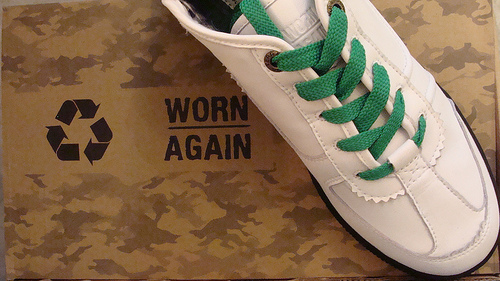
Barefoot Walking and Running: Best of Both Worlds with Vivo Barefoot Sneakers
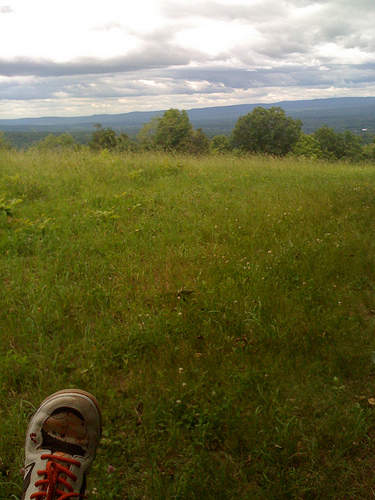
My Viva Terras. Cute on the trail or off.
Last summer, I was walking up from the beach at Gay’s Head on Martha’s Vineyard. (They’ve renamed the place Aquinnah, but I’m sticking with the original name, thank you very much) and then headed up the steep dunes, and over the top. When I got to where the sand meets the more rocky soil, I stopped to put my Chakos back on, but then decided to go barefoot instead.
As I walked up the path, seagrasses waving in the setting sun all around me, I could feel what was beneath my feet change. It started more sandy, and warmed from the sun, then small pebbles cropped up, and as I went around a bend, I felt the ground cool and dampen and the pebbles recede into the soft, more claylike walkway. As I headed up another rise, warmth again seeped between my toes, and as I reached the road to wait for the bus, the concrete burned my feet and I put my shoes on.
On that ten minute walk, I remembered something I knew as a child, which is that you miss tons of information from the earth when constantly wear shoes. I used to spend entire summers essentially barefoot (I grew up at the end of a dirt road in the Hudson Valley) and when I was 8 I could have told you how long it had been since rain from the viscosity of the mud that pushed between my toes since I spent hours I playing in the wetland next to my house. I don’t know if I could tell you that now, though I’m certain I could learn again.
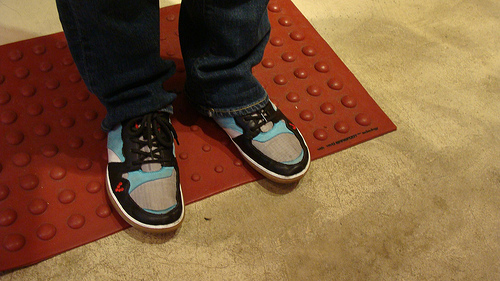
Men’s Vivo Barefoots at the Terra Plana store.
So when a couple months ago I heard about the barefoot running movement, and the new book, Born to Run, I was intrigued. The premise is that our fancy $200 uberpadded sneakers are actually BAD for our bodies when running, and can actually cause or exacerbate injury. Which makes sense if you think about the fact that we have only been wearing such contraptions for about 20 years (flat, unpadded Converse All Stars were the sneaker of choice for basketball players for years). So I went hiking with a friend in Connecticut and took off my sandals and did a bit of trailrunning with naked feet, which was fun as long as I was careful (and this forces one to focus on each step, which is interesting). And then…
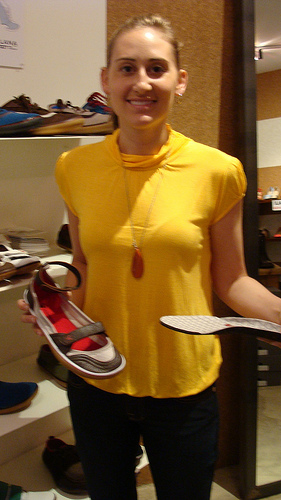
The Vivo Barefoots and these maryjane versions all have removable inserts made from recycled materials.
Then I was lucky enough to be invited to a great event put on by Terra Plana and tried a pair of their barefoot-like sneakers, the Vivo Barefoots (which are also super ecofriendly). I then went running in the Catskills in the Vivo Barefoots and though my feet were protected, I really felt the ground beneath my toes, which was a really grounding (haha) experience. Barefoot running is really fun, but for a barefoot-like experience, the Vivo Barefoots are a close second. I also got a chance to talk to Galahad Clark, the president of Terra Plana, and Christopher McDougall, who wrote Born to Run (and is a barefoot runner himself- see his video at the bottom).
Eco Chick: What was your impetus for creating a barefoot-like shoe?
Galahad Clark: Millions of years of evolution have shown us that being barefoot is the healthiest way to be for the body. It is only in the past 30 years that running shoes have become laden with padding, arch supports and technical advances that countless studies and medical professionals show are doing more harm than good.
To me it is common sense, if you pad the foot not only do you stop it from working, but you mask if you are doing something wrong. Barefoot running or walking encourages mid foot strike and preventing hard unnatural heel strikes and encourages natural posture and motion.
Based on this simple principle Vivo Barefoot is as close as you can get to the shoe not being there at all and offers this back-to-basics philosophy for modern life. The VivoBarefoot shoe has a uniquely thin and puncture resistant sole (a patented technology) that gives all the protection of normal shoes and the health benefits of walking barefoot.
EC: Why do you think the idea of barefoot or less shoe is appealing to people right now?
GC: There is definitely a tipping point happening right now as people realize that barefoot is really that way to go. In addition to Chris’ book, and the many studies being published and I think people are looking for back-to-basics answers. From roof top organic farms to making more meals at home, I think we are catching on to the idea of simplicity and natural.
This is not about selling a gimmick. That is not what we’re trying to do. It is not just about making your butt tighter or getting a better work out (which barefoot will do) it is also about sensory perception, knowing what is going on in the earth beneath us, and liking it…
EC: What’s your connection with the book, “Born to Run” and the barefoot running movement?
GC: I picked up “Born to Run” and spent all night reading it – I could not put it down. I was actually in Mumbai at the time and was after finshing it, got up at 4am and ran barefoot on the beach. This book is pure inspiration, it is about running and loving to run,. Without competition or ego, just for the fun of it – like kids run. The Tarahumara tribe run up to 150 miles in virtually barefoot with no injuries. The book really tells the barefoot story well and shows exactly why barefoot is better.
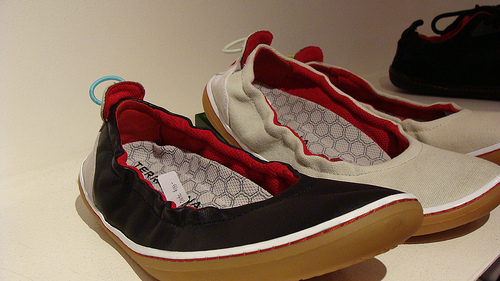
These slip-ons are favorites of Gwyneth Paltrow!
In the video below, Christopher McDougall, who wrote the book, Born to Run, talks about the barefoot running movement and how he got to write the book:
| The Daily Show With Jon Stewart | Mon – Thurs 11p / 10c | |||
| Christopher McDougall | ||||
|
||||



